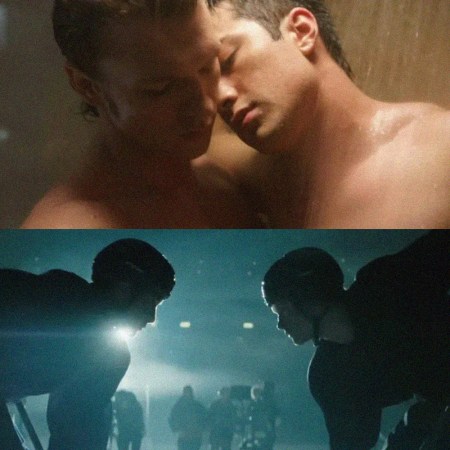While he was still in high school, an 18-year-old Tony Dunst developed a strong habit. That habit followed him to college, eventually leading to him dropping out after about a year.
Luckily for him, the habit wasn’t related to drugs, sex or booze. Nope, for Dunst, it was poker.
An avid online poker player, Dunst’s skills took him to games in Australia, China and the Caribbean before he padded his resumé event further in 2016 by winning a World Series of Poker gold bracelet in a $1,000 No-Limit Hold’em event, taking home a prize of $339,254.
With career earnings of nearly $3 million, Dunst took over as the lead commentator for the World Poker Tour prior to Season XVI of the event. Luckily for us, he took some time to give us a few insights about the game other than knowing when to hold ‘em and when to fold ‘em.
Pay attention to where you are.
“When I’m playing somewhere that poker has been around a long time, I anticipate that people are a little more familiar with what you call game theory optimal strategy. Basically, that’s the idea that instead of trying to outplay the player, you’re just going to make the best decision over the long run and assume it works out for you. Whereas when you go to places like Brazil where the game is still young, many players still have noticeable mistakes in their game. So instead of trying to make this long-term optimal play, you should alter your approach and exploit your opponent for the specific mistakes that they are making. So you might see them playing way too many hands pre-flop, so it’s smart to re-raise them more aggressively than you would otherwise.”
The meek shall inherit the pot.
“The classic tell in poker is that when someone is acting strong they are weak and when they are acting weak they are strong. I find that especially consistent with the latter. If anyone says something about it being time for them to go home, there’s no chance that person is going home or about to get knocked out of a tournament. If they say something like that and then go all-in, they have a good hand. It’s one of the most consistent tells across the entire world.”
Look your opponent in the eye.
“Where people look when the first three cards come out (the flop) is a consistent tell. Typically, if someone’s hand improves when the cards are out, their eyes will flick down in the direction of their chips for maybe half a second. It’s this very sub-conscious reaction when your brain knows you are going to bet. Afterwards, the eyes will return to where they were looking before and most people don’t even realize that they’ve done it.”
Your phone isn’t just for Instagram.
“If I get deep into a tournament, I’ll often use my phone to pull up what we call a Shove Chart, a chart that basically tells me what hands I should go all-in on before the flop depending on stack size. It’s just nice to have that as a reminder before I check my cards. Some people use apps to perform a similar function. Usually though I’m just using my phone to do what we all do.“
The hand isn’t over when you fold.
“The best thing you can do to stay focused during a tournament is to try and build reads on your opponent by watching the hands you aren’t involved in play out. It can be very tempting to not pay attention after you’ve folded, but if you want to have a good understanding of how your opponents think about the game and the type of decisions they make and the hands that they’ll play, then it’s very important to watch the hands you don’t play. That’s about 80% of the action. The deeper you get, it’s even more important because every decision is even more impactful.”
The hand isn’t over when your opponent folds.
“You also want to see how much attention you opponents are paying to the hands they aren’t playing because then I know whether they saw me make certain decisions. That way I know what sort of information they have on me and I can incorporate that into my decision making against them. It also tells me something about how serious of a player they are. Pros still zone out at the table, but the best players typically get more focused as the game becomes more serious.”
Mind your pros and newbs.
“If you’re trying to tell if someone is a pro, you should be looking at how they are dressed, the way they talk about the game, their age, their focus level on the cards, what kind of decisions they make early and if they say anything about where they have played before. People will volunteer all kinds of information about their skill level and the ones that aren’t professionals don’t really understand the consequences of doing that. If it’s the first event for someone, they’re probably more susceptible to bluffs because they’re scared.”
Know how to tell the “Commode Story” of your cards.
“The best way to bluff someone is tell them a plausible story about the hand that you’re representing. So essentially, when you run a bluff, it needs to be congruent with the way that you would play a really strong hand in a certain type of situation. So if you’re operating against a thinking player, they’re likely going to suss out that it would be really difficult for you to get into certain situations with a really strong hand. Therefore, you need to look for a situation where it’s likely you’d end up if you had really strong cards, even if you don’t. There’s where you have an opportunity to run a bluff on something and it’ll be very plausible.”
Patience makes perfect.
“If someone is playing for the first time, the advice I’d offer is to be very patient with your hand selection. There is a temptation amongst new players to play a lot of hands and to get mixed up in the action to see what you can pull off. Typically that will lead to making a lot of mistakes. The safest thing to do is to enter pots where they have good cards and therefore have a chance of making the best hand (on the river) and win at showdown when the cards are turned over.”
It’s not a lie if you can make them believe it.
“There’s not really any one thing you can do to verbally or psychologically influence your opponent to take a certain action. If there was such a thing, it’d become common knowledge and then people would falsify it. That said, there are a couple of friends of mine who have been able to perfect a technique where they act like their hand is a winner even though they’ve already figured out they’re beat. It basically just requires acting and talking as if you’re so sure that you have the best hand, your opponent has no choice but to fold. There was a really good example of this at a $1 million tournament during a hand between Tobias Reinkemeier and Scott Seiver.”
The Charge will help you move better, think clearer and stay in the game longer. Subscribe to our wellness newsletter today.




















